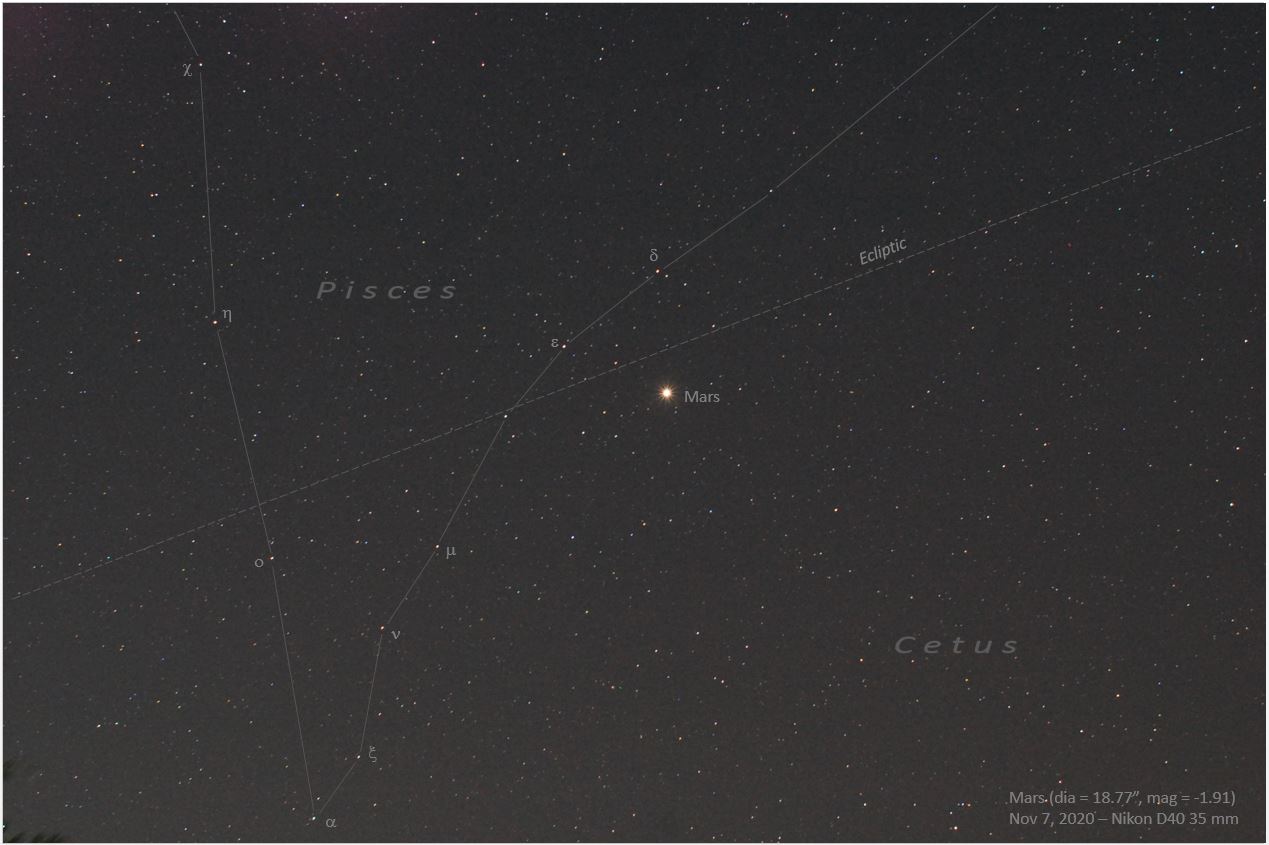Planet Scenes November 2020

|

|
By November 30, Jupiter and Saturn have closed the gap to 2°15' and are visibly narrowing. The best description available of the coming conjunction of the two planets is of course by Guy Ottewell on his Universal Workshop website. The first image on the far left is with a 60mm lens, while the second image was using a 55mm lens, so compare the positions of the planets using similar images below. |
 |
On November 26, 2020, Thanksgiving Day, I tried to image the suddenly active Sun. Sunspot groups 2786, 2785, and 2783 are arrayed from following to leading side of the Sun, i.e., from left to right in my image. I can't get very sharp focus with my Nikon D40 through my C8, so this is the best of the 25 or so images I acquired. A far better view shows the sunspots and plages in much more detail. | |

|

|

|

|
Left to right:
|
 |
 |
Jupiter and Saturn have now closed to 4°32' apart by November 7, slowly moving toward Capricornus. Mars has slowed considerably and is almost stationary before resuming eastward motion as it arcs back up to the ecliptic. Using the C8 at about 300x, I was able to see the tiny north polar cap and broad, mottled dark areas across the entire mid-section of the disk, centered on Sinus Meridiani, Margaritifer Sinus, and Aurorae Sinus. I could make out Mare Acidalium in the southern hemisphere, and the smallest feature I noticed was the brighter spot in the middle between Sinus Meridani and Margaratifer Sinus. The linked view of Mars is from the NASA/JPL solar system simulator. |
 |
 |
In early November 2020, I managed to image the three bright outer planets before the just-past-full Moon rose to brighten the sky. On this evening, Jupiter has just closed the gap to Saturn to a few arcseconds less than 5° as they continue moving eastward in Sagittarius toward their conjunction later this year. Mars has just moved far enough away to be less than 20" in diameter, although it is still brighter than magnitude -2.0 as it continues to retrograde in Pisces. Note how far Mars has traveled, and how much closer it is to the ecliptic, since my image of September 19. |